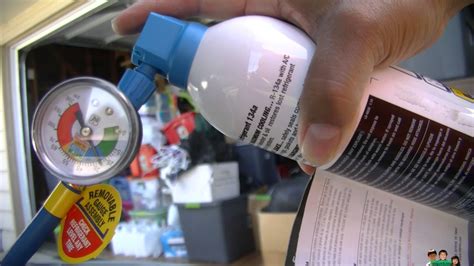How to Recharge Your 2010 Chrysler 300 Limited AC System
The sweltering summer heat can make even short drives unbearable if your air conditioning system is on the fritz. A low refrigerant charge is a common culprit behind a weak or non-functioning AC in your 2010 Chrysler 300 Limited. While a professional recharge is always an option, many car owners find recharging their AC system a manageable DIY project, saving time and money. This guide will walk you through the process, but always prioritize safety and consult your vehicle's owner's manual before starting. Improper handling of refrigerants can be dangerous.
What You'll Need
Before you begin, gather these essential tools and supplies:
- Refrigerant (R-134a): This is the refrigerant used in most 2010 Chrysler 300 Limited vehicles. Ensure you purchase a recharge kit specifically designed for R-134a with the appropriate gauge set.
- AC Refrigerant Charging Kit: Choose a kit that includes gauges to monitor pressure and a hose to connect to the low-pressure port on your car. Look for kits that include leak detection dye for easier troubleshooting in the future.
- Safety Glasses: Protect your eyes from potential refrigerant spray or leaks.
- Gloves: Protect your hands from potential refrigerant exposure.
- Wrench (if needed): Some low-pressure ports require a wrench to remove the cap. Check your vehicle's owner's manual.
- Vacuum Pump (Recommended): A vacuum pump removes air and moisture from the system before recharging, ensuring optimal performance and preventing damage to the compressor. This is highly recommended, but not strictly mandatory for a simple recharge.
Step-by-Step Guide to AC Recharge
Caution: Refrigerant is under high pressure and can cause serious injury if mishandled. Follow all instructions on your refrigerant kit carefully.
-
Locate the Low-Pressure Port: Consult your 2010 Chrysler 300 Limited's owner's manual to find the location of the low-pressure AC service port. It's usually a schrader valve, similar to a tire valve, located near the compressor or on an AC line. It's often capped.
-
Prepare Your Vehicle: Park your vehicle on a level surface and turn off the engine.
-
Connect the Charging Kit: Attach the charging hose from your kit to the low-pressure port. Make sure the connection is secure to avoid leaks.
-
Optional: Vacuum the System (Highly Recommended): If you have a vacuum pump, this step is crucial. Connect the vacuum pump to the low-pressure port and evacuate the system for at least 30 minutes. This removes moisture and air, preventing compressor damage.
-
Check the Pressure: Turn on your vehicle's AC system and monitor the pressure gauge on the charging kit. The ideal pressure will vary based on ambient temperature, but your kit's instructions should provide guidelines.
-
Add Refrigerant: Slowly add refrigerant according to the instructions provided with your kit and monitor the pressure gauge carefully. Do not overfill the system.
-
Monitor the AC: After adding the refrigerant, run the AC system for a while and observe if it is functioning correctly. Check the temperature coming from the vents.
-
Disconnect and Inspect: Once you are satisfied, disconnect the charging hose from the low-pressure port. Check for leaks around the connection.
Troubleshooting Common Problems
My AC still isn't working after recharging.
Several issues could cause this:
- Leak: A leak in the system will require professional repair to identify and fix the leak before recharging. Consider using a leak detection kit or dye to pinpoint the leak.
- Compressor Failure: A faulty compressor will prevent the system from functioning properly.
- Electrical Issues: Problems with the AC compressor clutch, wiring, or other electrical components could also cause issues.
How often should I recharge my AC?
A properly functioning AC system shouldn’t require frequent recharges. Regular maintenance, including checking for leaks, is more important. A slow leak might only need occasional recharges, while a larger leak requires professional repair.
What are the signs of a low refrigerant charge?
- Warm air blowing from the vents.
- Weak airflow from the vents.
- Inconsistent cooling.
- Cycling on and off frequently.
Can I use a different type of refrigerant?
No. Using the wrong type of refrigerant can severely damage your AC system. Stick to R-134a for your 2010 Chrysler 300 Limited.
Disclaimer:
This guide provides general information and should not be considered a substitute for professional advice. If you are uncomfortable performing this task, consult a qualified automotive technician. Improper handling of refrigerants can be dangerous. Always refer to your vehicle's owner's manual and the instructions included with your AC recharge kit.

